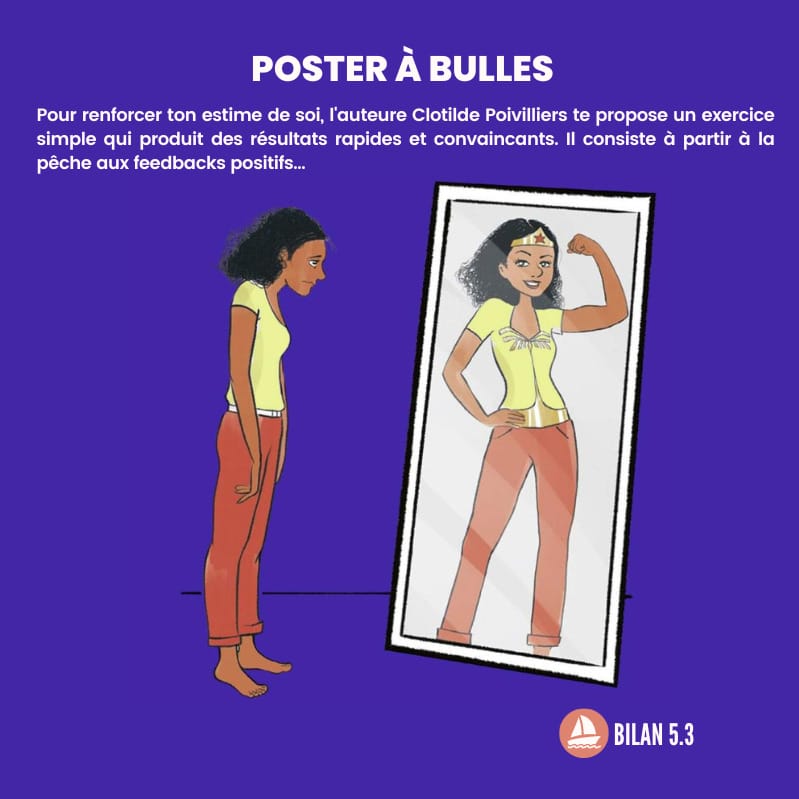Our personal and professional development is intimately linked to our emotional intelligence, that is to say our ability to perceive and express emotions. We offer you a good opportunity to put it to the test by carrying out these five practical exercises.
According to its official definition: “emotional intelligence is the ability to perceive and express emotions, to understand and to reason with emotions, as well as to regulate emotions in oneself and others“*.
More concretely, emotional intelligence identifies a person’s abilities through their personal skills and its social abilities : self-confidence, creativity, empathy, self-control, power of persuasion, etc. These are what have been called the soft skills (or emotional skills).
We now know that individuals with a high IQ are not necessarily the most successful in life. It is by responding to a EQ test (emotional quotient) that one can assess the level of one’s emotional intelligence. Here through five exercises how you can progress.
1- The mental map (mind map)
The technique of ” mental map is very valuable for working on emotional intelligence. Development by the English psychologist Tony Buzan (died in 2019), it is intended to improve note taking and therefore the understanding of a problem. It is also a very useful exercise to promote divergent thinking and ultimately improve creativity and emotional intelligence.
- Take a starting word. Note around this word the associations of ideas that you immediately think of. Each is circled and linked to the starting word by a line.
- Associate new words with each previous association. Your goal: to have no more space on the sheet.
2- The detective
Here’s another emotional intelligence test to practice at a party with strangers or in a public place, like an airport or a mall. Take a good look at the people around you. As surprising as it may seem, an individual finding himself in the middle of a crowd acts as if he were alone in the world.
- For each person scrutinized, identify if his body says “yes” (positive attitude) or not “ (negative attitude).
- Observe them possible changes which can occur when we go from “yes” to “no” and vice versa. Try to identify what determines each time the changes in the behavior of the individuals you observe.
For example, see this man in the company of his little boy, he is in a situation of “yes”. He walks around with his chest erect, his shoulders relaxed. Suddenly, his gaze shifts and his face closes. He passed in a “no” situation as his child begged him to enter a shop to buy something…
3- Debriefing
Search your memory for a situation in your life where you experienced real failure. You are going to use the “debriefing” technique consisting of analyzing and understanding the reason(s) for this failure.
- Mentally relive the chosen situation, step by step. You can say it out loud or write it down. Do not omit any detail and limit yourself to the unfolding of the facts.
- Identify the key moments, those where it happened something significant compared to the fatal outcome. For each of them, ask yourself: “why? “, “because of what (who)? and “Where is my personal responsibility?” »
These questions will allow you to understand the ins and outs of your unhappy experience. Then put your emotional intelligence into action and use the answers obtained to consider the course of events. as if everything went well.
4- The scenario
Read these three case studies corresponding to typical everyday life situations. Re-read the statement several times if necessary, trying to put yourself in the shoes of the character. Empathy is a key emotional intelligence skill.
To help you, mentally picture the attitude and thoughts you might experience being in their shoes.
- Helena is 43 years old. She loves her job as an executive assistant but she can’t stand her boss’s unjustified remarks anymore. The latter does not miss an opportunity to humiliate him in public. She is exhausted and when she returns home, her children and her husband do not understand the fits of tears that sometimes shake her.
- Sophie is 35 and she hates driving a car since the accident she had when she was a student with friends. The two people in the car lost their autonomy. When she gets into a vehicle, even when stationary, she feels a deep discomfort.
- Jean has a friendly but completely ineffective office colleague. At the slightest remark, the colleague loses his temper and borders on paranoia. John sits considerably slowed down in his job.
5- The list of happiness
- List the 10 things that make you particularly happy. Challenge yourself to complete at least half of it over two weeks.
- At the same time, list 10 actions that could make happy and give happiness around you.
- Challenge yourself to complete at least three over the next two weeks. Prioritize what you can do for others, it will then be natural to do more and more for you.
Do you know any other very simple little exercises to develop emotional intelligence? Share them in the comments…
*Based on the original definition of the concept in 1990 by Salovey & Mayer.
















